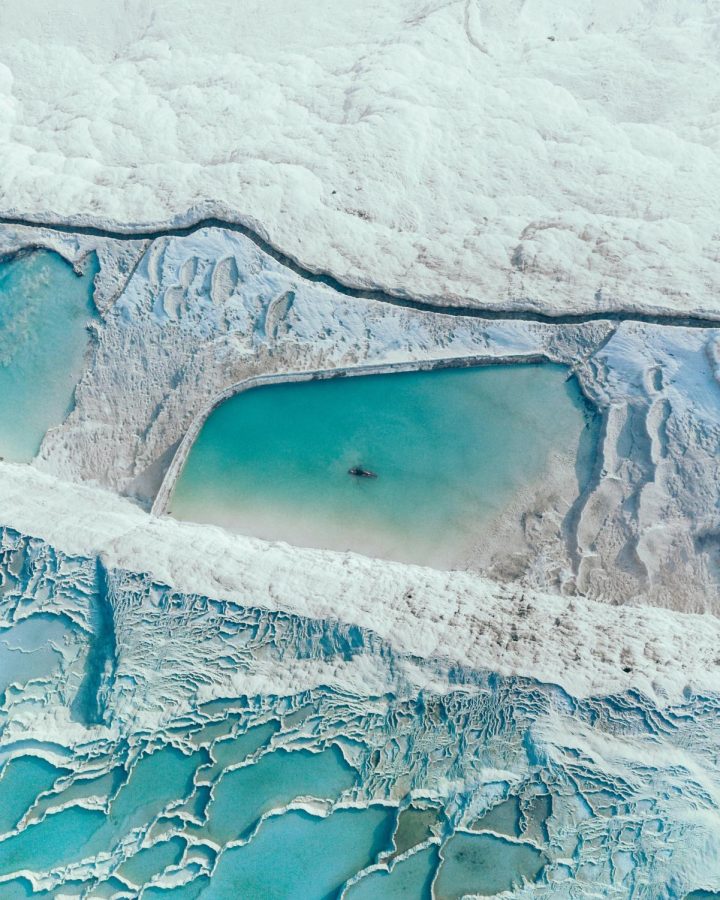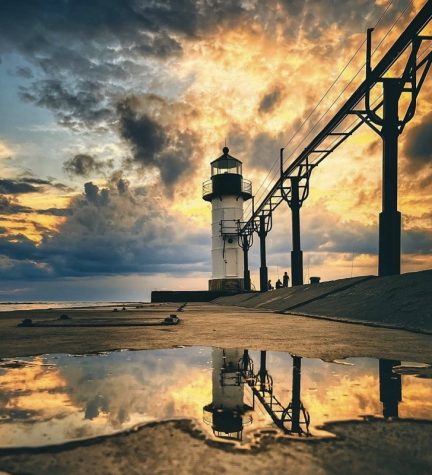What remains of the Great Salt Lake has the potential to kill thousands

More stories from Alysse Calabio
An aerial view of the scenery at Great Salt Lake
The water ripples as the wind gracefully grazes over top of it. In the far distance sits the mountains, defining where the sky starts and the lake ends. The Great Salt Lake provides a more than picture-perfect view, or at least it would if it weren’t for the fact that it’s drying up. Where there used to be a scenic lake sits nothing but a shrunken, dreary remnant of what used to be—one that has the potential to kill.
It is no surprise that the water levels of the lake are constantly fluctuating; it is a natural process that occurs with time. But if that is the case, then why is the situation with the Great Salt Lake any different from any other lake? It is worse for the simple fact that the Great Salt Lake has reached an unprecedented low—reaching 19 feet below what it normally would be and losing 73% of its water according to CNN.
But even worse? It is estimated that we only have about five years to fix it.
It can no longer be a concern that we push to the back of our minds or else the harsh ramifications will surely catch up to us.
The ramifications of the continually dropping water levels are already in place. The lake’s ecosystem is quickly collapsing as the lake continues to lose water. It is home to millions of brine shrimp and brine flies—all of which are used to feed the 10 million migratory birds that use the lake to rest, refuel, and repopulate. As a result, the organisms that are living within or dependent upon that lake are immensely impacted due to the loss of a source of food or being displaced.
Although the loss of an entire ecosystem is more than alarming, it is not the only problem raising red flags; in addition to the falling ecosystem are the concerns about the consequences the lake has in store for the people. The crisis of the lake completely drying threatens the billion-dollar industry of mining all the natural resources that the lake holds; it is the same industry that provides about 7,706 jobs annually, so to lose the lake would mean losing a large source of jobs for the people and an even larger source of income for the government.
On top of the impending financial threat looming over the people is the arguably even worse threat to people’s health. As winds blow over the soon-to-be barren lake, it moves the dust particles along with them—particles that contain arsenic and mercury according to the New York Times—right into the lungs of the people. These pollutants are linked to high rates of asthma, heart and lung diseases, and early death.
All of these complications gradually arose; they are the result of excessive water consumption and, to almost no one’s surprise, climate change. The combination of 70 percent of the state’s water going to agriculture, 9 percent to mineral extraction, 9 percent to cities, and the weather continually heating up, leaves essentially no water for the actual lake, resulting in the deadly consequences we are seeing now.
There needs to be a drastic change in order for any hope to return things back to normal. Luckily, state lawmakers are already starting to take action with new bills, going as far as to give incentives to farmers who use less water from the rivers that feed into the lake.
The Great Salt Lake is drying up right before our eyes. It can no longer be a concern that we push to the back of our minds or else the harsh ramifications will surely catch up to us.

Alysse Calabio is going on to her second and final year on The Central Trend. If there's anything she loves more than the world, it would be experiencing...































































































